How to Make Compost Tea & Apply It
This post discusses how to make compost tea, with our specific recipe. We also share our easy way to apply the compost tea to your garden, which doesn’t entail numerous trips to and fro with a bucket or watering can!
This post is the fourth and final installment of the Compost Tea Series.
The first post discusses Compost; what it is, how to make it and how to use it.
The second post discusses What Compost Tea Is and Why You Want to Use it in Your Garden. We talk about the difference between Compost Tea and Compost. We discuss the difference between Passive and Actively Aerated Compost Tea. And most importantly, we discuss why Compost Tea is beneficial for our organic gardens.
The third post discusses how to build a Compost Tea Brewer. My husband built our Compost Tea Brewer 5 years ago as my Mother’s Day gift. This post discusses the material he used and step-by-step instructions to build the Compost Tea Brewer.
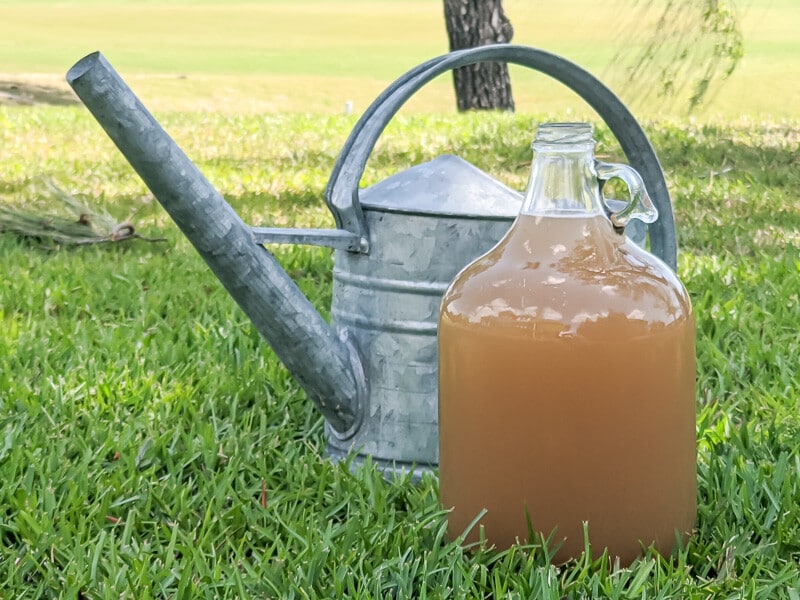
Table of Contents
Let’s Make Some Compost Tea!
Homemade Compost Tea Ingredients
- Approximately 25 gallons of unchlorinated water
- 5 cups of compost (In the perfect world you would have compost from different sources, as well as earth worm castings and humus, creating a more organically diverse compost tea.)
- 1/2 cup Molasses
- 1/2 cup Neptune’s Harvest
- Mesh Brewing Bag
Water
Fill the container with water. We need to make sure we are using unchlorinated water – the chlorine will kill the very organisms that we are trying to grow! If you are using normal tap water, let the water sit for 24 hours, give or take. This will allow the chlorine to dissipate. Rainwater, pond water, or well water is fine as is.

Compost
The tea you brew will only be as good as the compost used for the brewing.
Ideally, you’ll want well-aged, fully decomposed compost rich in the types of bacteria and fungi that we are seeking to reproduce in our homemade compost tea solution. And even more ideally, you would have compost from a variety of sources (earthworm castings, different compost piles, humus, etc…)
Compost is commercially available, but we prefer to make our compost from the fruit/veggie scraps, eggshells, coffee grounds/tea bags, etc., from the kitchen, yard, and garden clippings. We put all these ‘compost ingredients’ into a bin just like this one and turn it occasionally. We try and keep our compost as “clean” as possible and avoid manure from any source to limit the risk of any harmful pathogens being introduced into the tea.
Pop over for a more in-depth discussion of the hows and whys of compost.
There are many resources available on the web and tons of books for those new to composting. This is a great reference.
Nutrients
Our goal during the brewing process is to take the beneficial organisms contained in the compost, introduce them to our solution to provide them the resources to reproduce and multiply.
For that to happen, we need to provide them with oxygen and food. Our air pump, aeration frame, and air stone will provide them with all the oxygen they need. We have to provide a food source. Since we are growing both fungi and bacteria, we need to feed each one differently. Sugars, like Molasses, Agave, and White Sugar will feed our bacteria. Fish Emulsion and Sea Kelp are carbohydrates that will feed the fungi in our compost tea.
Compost Tea Bag
You’ll need a mesh bag to hold the compost during the brewing process. I hang the bag full of compost from the crossbar directly over a large air stone during the brewing process.
Ensure the mesh is not so fine as to limit the ability of the organisms to release into the solution. We’ll need a bag large enough to contain at least 5 cups of compost. This Brewer Bag is what we use.
Compost Tea Instructions:
Fill your DIY Compost Tea Brewer with water, place the compost in the brewing bag, and hang the compost tea bag from the frame’s crossbar.
We want the bag to hand directly over the air stone. Turn on the air pump to begin the agitation/oxygenation process, mix the nutrients and pour the nutrient mixture into the water.
Let the solution brew for a minimum of 24 and up to 48 hours, depending on the heat.
How do we know when it’s done??? Smell…..when it begins to smell less “fishy” and more “dirty” – like the smell of fresh, rich soil, you’re done! Don’t panic if you see foam on the top of your tea, it typically happens if you have added molasses, protein, or worm castings.
One word of caution……DO NOT TURN OFF THE AIR SUPPLY! If the solution becomes oxygen-deprived for any stretch of time, it will quickly become anaerobic – literally living without air – and harmful pathogens in our solution can result.
If the tea smells rotten, putrid, or foul in any way, throw it out. It has likely gone anaerobic, and we do not want it on our plants or in our soil. Let your nose be your guide. Healthy homemade compost tea will smell more similar to the earthy richness of fertile soil than it will to your garbage can! Once done, our tea is now ready to be put to work in the garden!
Application of Compost Tea
Watering Can or Buckets
Open the spigot and let the compost tea flow into the watering can or bucket.
We recently figured out a great way to apply the compost tea and kick ourselves that we didn’t think of it sooner. Heretofore, we would trudge back and forth from the brewer, filling up watering cans.
Then we had the 💡 moment! We can now spray our garden with the tea from the brewer using a submersible pump, a hose, and a hose nozzle! I’m telling you…it is a game-changer!
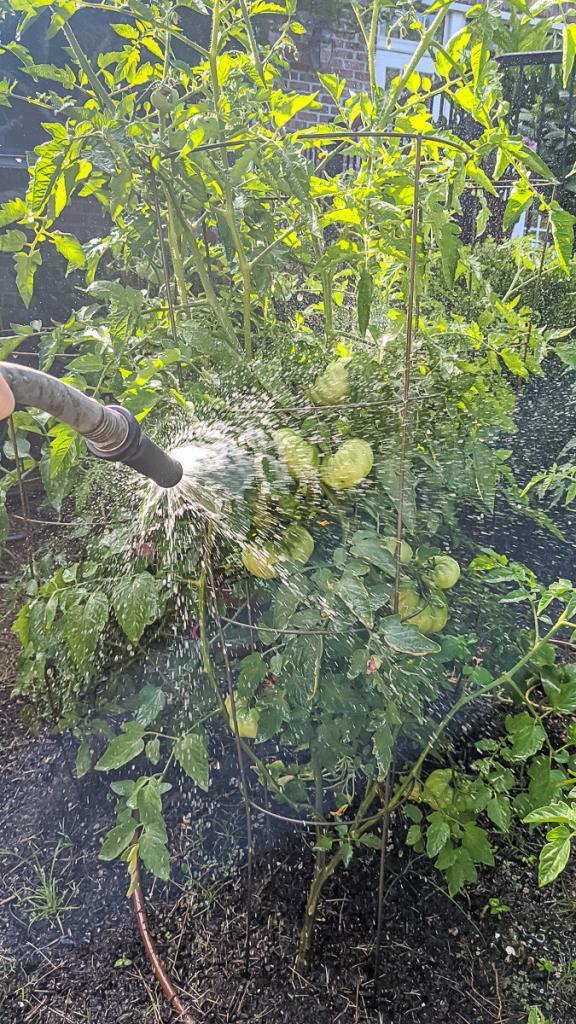
Spray Your Compost Tea
What you Need to Spray your Compost Tea from the Brewer
- A Submersible Pump. We already had this one (we keep it on hand for hurricane flooding!) and it does the job perfectly. Any submersible pump should work, just make sure it has a hose attachment.
- A Hose Just make sure it is long enough to get from your brewer to your garden.
- A Hose Nozzle. We found the simplest nozzle is the best. Ones that have all sorts of different spray patterns just get clogged; this is the one that is working perfectly for us now.
How do You Set Up the Hose Attachment to Spray Your Compost Tea?
- Attach the hose to your submersible pump.
- Attach the nozzle to the other end of the hose.
- Plug the pump into your outlet.
- Gently drop the pump into the bin of compost tea and start spraying! Remember that compost tea is good both as a foliar spray and as a soil spray.
We now brew 2-35 gallon batches a week, both for our vegetable and flower garden. Do your own calculations based on the size of your garden. You can’t “over tea” your garden. We are especially mindful of our veggies during the hot summer months here in the southeast US. That said, if the soil is already saturated or in an overwatered condition, then it only stands to reason that we don’t want to add any tea!
The tea is beneficial to not only the soil but also to the foliage. We apply the tea directly to the foliage and the soil surrounding the plants. Keeping in mind that the tea contains nutrients and beneficial microorganisms for the soil and the plants, watering your soil – an empty bed, for example – will also be valuable.
Clean Up
It is important to clean all parts of your brewer following each brew. Like anything living thing, the organisms that make up your compost tea not only produce waste, but they decay once dead. We scrub our bucket and the frame well and let it sit in the sun to dry before we store it.
Welcome to the world of homemade Compost Tea…..your garden thanks you!
To refer back to this post, bookmark this page or pin the following image.
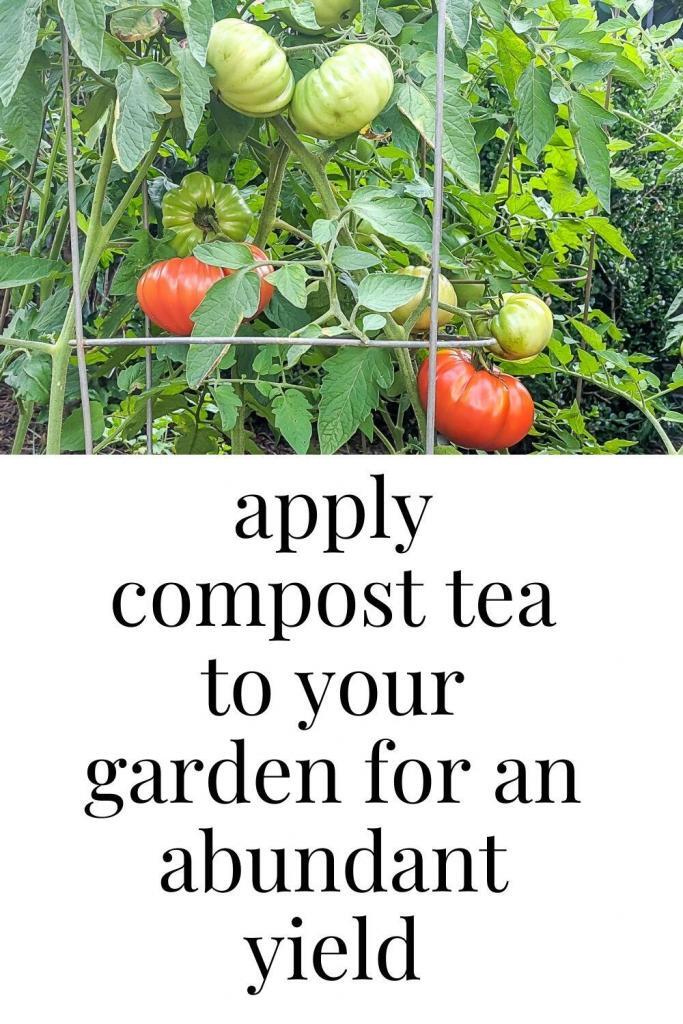
Thanks so much for spending a few minutes of your busy day with me!
To ensure you don’t miss future content, pop your email in the pale green box on the right or click here. I usually send one email weekly, so I won’t inundate your inbox. I’m sensitive to an overflowing email inbox!
We will only use your email address to send you emails, no more than 1-2 weekly. In addition, you will have access to my growing library of knit & crochet patterns and other printables. Check back often as this library will continue to grow. You can unsubscribe anytime by emailing me or clicking on the “unsubscribe” link at the bottom of all emails.
And you can access many of the products I refer to on my Nourish and Nestle Amazon Page. You can access it here.
So, if you’d like to participate in the ‘subscriber benefit’ action, simply subscribe to Nourish and Nestle here or use the form on the right sidebar. It’s slightly towards the top.
I have sent all my subscribers the link to the Subscriber Benefits Library. If you missed it or misplaced it, let me know.
Until next time…






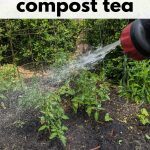
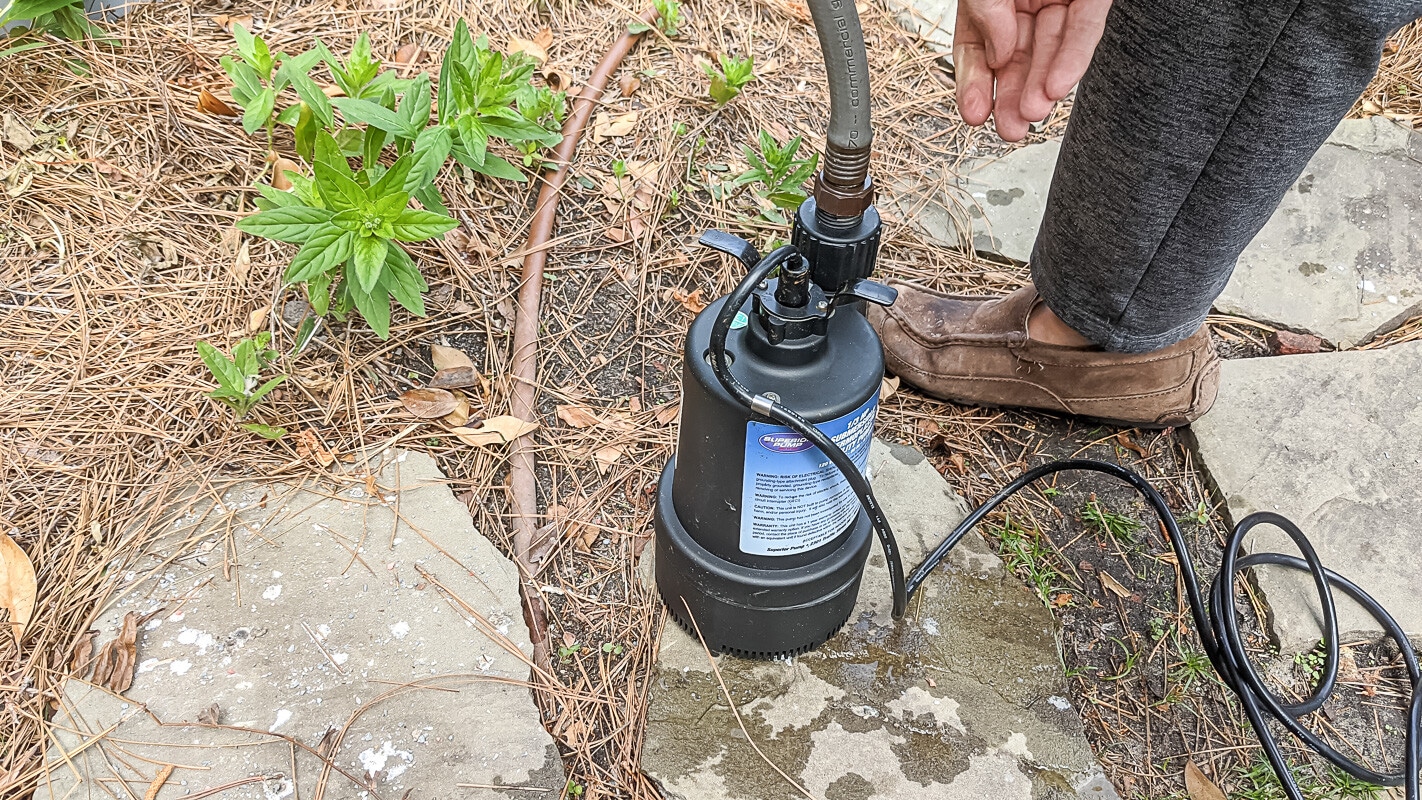
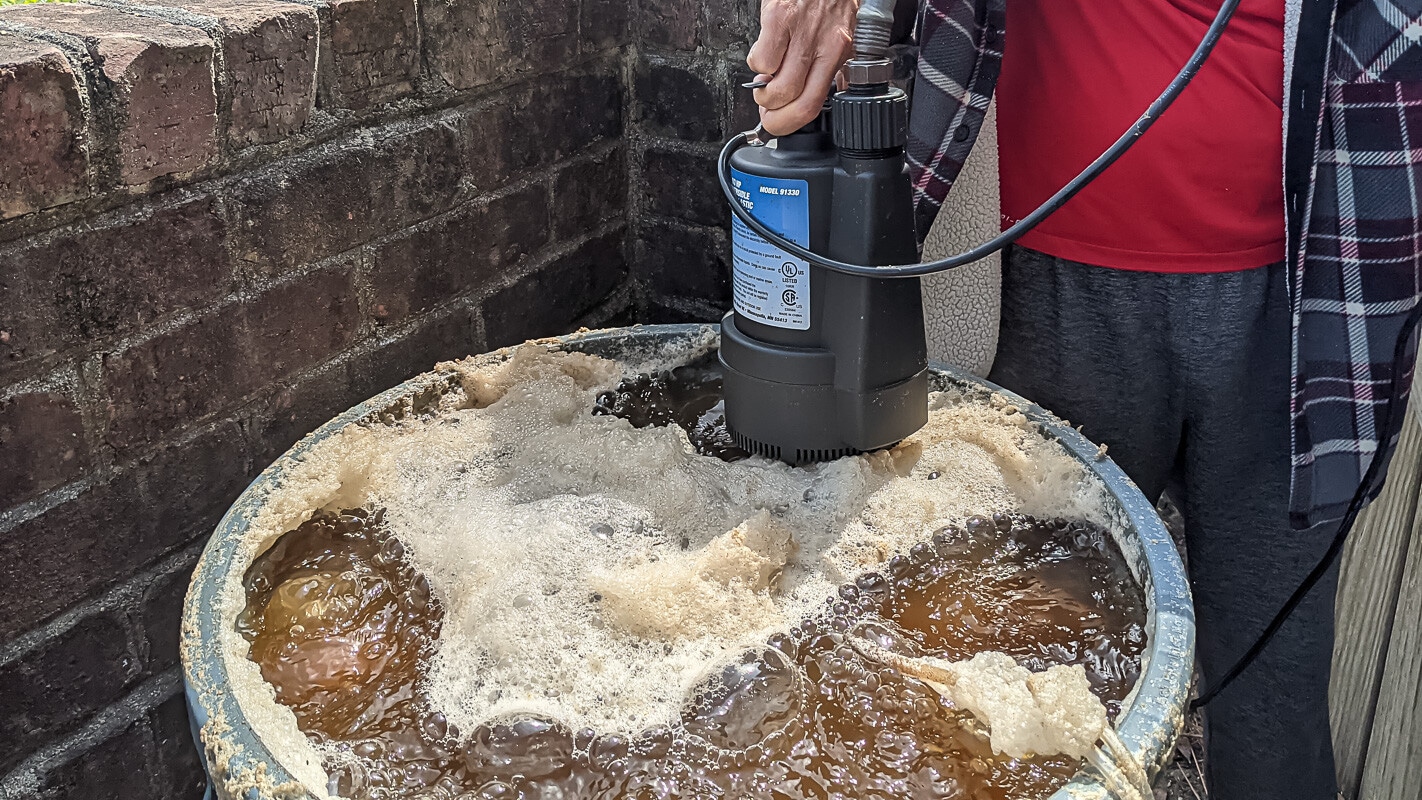
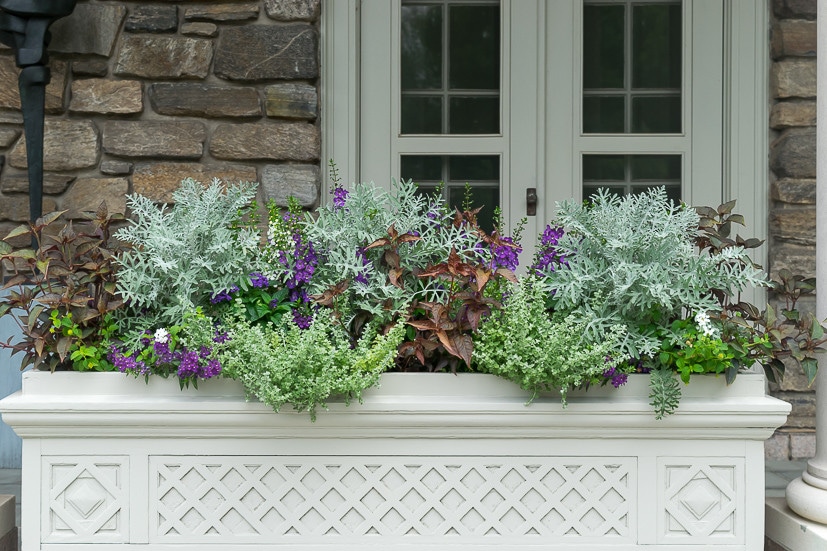


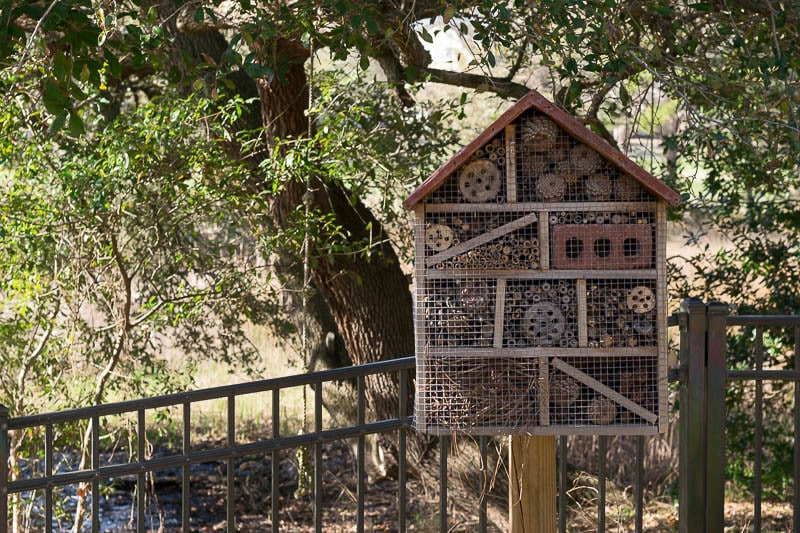

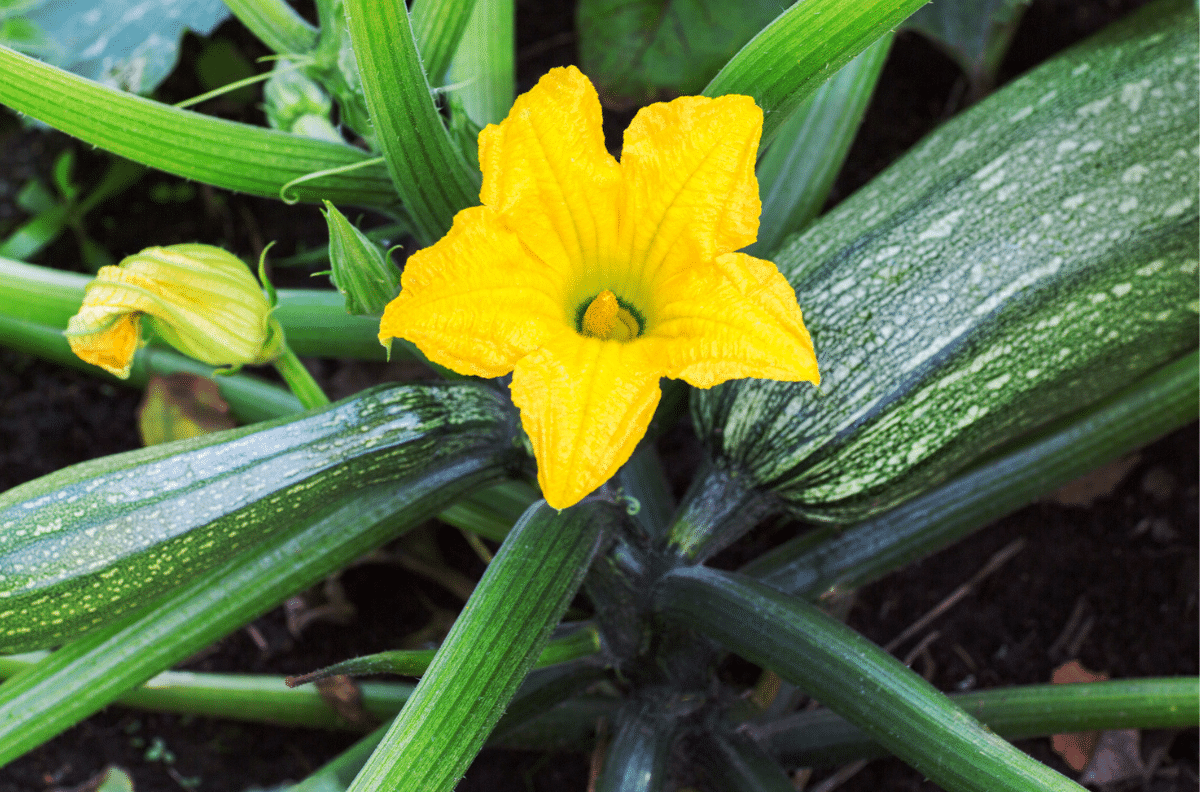
How do you clean the inside of the frame tubing and in the tubing that goes to the pump and air stone?
Hey Susie, we make sure to rinse the brewer and frame tubing out as thoroughly as possible after every application. When we get ready to “brew” every new batch, we fill up the container with regular chlorinated water from the hose and run with the air pump circulating for 24-48 hours before adding the compost in order to: 1) make sure the water becomes de-chlorinated prior to brewing and, 2) help clean/rinse out the frame and pump tubing. Hope that helps. Good luck!